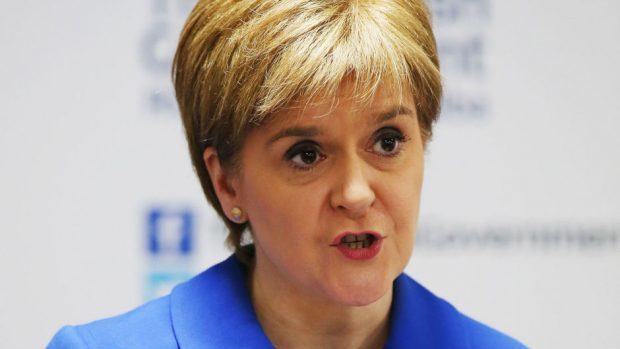Middle earners in Scotland will pay more tax than other Britons earning the same wage under SNP plans.
Nicola Sturgeon said she would freeze rates for all bands, but would not pass on George Osborne’s tax cut for higher rate payers.
It means those Scots earning £45,000 or more next year will be lumped with income tax bills £323 higher than their counterparts in the rest of the UK.
One critic dubbed the proposals “pathetically timid”, while another opposition leader said they are a threat to the Scottish economy.
While Ms Sturgeon has rejected Mr Osborne’s lifting of the higher rate threshold to £45,000, the level at which people pay in Scotland will rise with inflation.
Next year it will go up from £43,000 to £43,387.
The plans also include a nil rate band which raises the amount Scots can earn before paying any income tax to £12,750 from £11,500.
There will be no change to the additional rate as the SNP retreats from a 45p to 50p rise for those earning at least £150,000.
Basic rate payers, who account for about 85% of the population, will not see any income tax rise over the next five years.
Ms Sturgeon said: “No taxpayer will see their bill increase as a result of these Scottish Government proposals.
“In 2017/18, instead of a large tax cut we will ensure the higher rate threshold rises only by inflation.”
She said the SNP’s proposals are likely to raise more than £1billion in extra revenue over the next five years.
But Scottish Labour leader Kezia Dugdale said: “Instead of ending austerity in Scotland, this means billions of pounds of Tory cuts passed on to Scotland’s public services. Nicola Sturgeon must now tell people where these cuts will fall.”
Scottish Conservatives leader Ruth Davidson said: “Nicola Sturgeon has confirmed today that she wants to make Scotland the highest taxed part of the United Kingdom.”
Willie Rennie, the Scottish Liberal Democrats leader, called the proposals “pathetically timid”.
The SNP unveiled its income tax plans ahead of new revenue-raising and welfare powers coming to Holyrood for April 2017.
